Tag: Training Tips
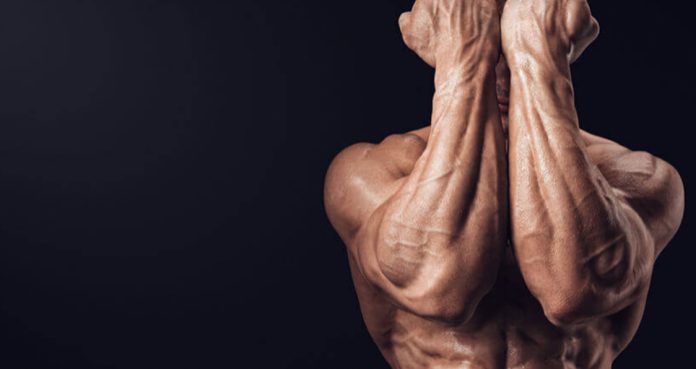
The 4 Most Common Lagging Body Parts and How To Fix Them
The Four Most Common Lagging Muscle Groups
Most people have muscle imbalances due to their genetics. A couple of their muscle groups will be laggings as compared to the other muscles. These people make the situation worse by overlooking these muscles or by not training them optimally.
If you go to gyms looking for the most common lagging muscle groups, you are most likely to find a pattern. Since you’re reading this article, we assume you have a lagging muscle group or two which you want to bring up to par.
Calves
Calves are one of the most common weak muscle groups. They also make it to the top of the most stubborn muscle group list. Unlike your upper body muscles, hiding your weak legs is easy. Bros with chicken legs cover them up with baggy track pants.
Training your calves can be different from the other muscle groups. You stand on your calves for the entire day and use them for moving from one place to the other. Your calves can recover quickly from your workouts and you can train them multiple times a week.
Rear Delts
Rear delts are a weak muscle group for most people. We’re sure most people aren’t even aware of their existence. Since the rear deltoids are on your back, it is hard to establish a mind-muscle connection with them since you can’t look at them in the mirror while training.
Rear deltoids are a hard muscle to train. Most people stick to a single exercise for training their posterior delts. You should add variations and target your rear delts from different angles in every workout.
Forearms
Most people spend way too much time training their arms and completely ignore their forearms. Muscular forearms can add to the size of your arms. Your bicep and triceps workouts aren’t enough to develop your forearms.
You need to train your forearms with compound and isolation exercises. Add forearm exercises to your arm days. You could also get hand grippers to train your forearms while you’re sitting idle.
Neck
Only a few other things look more awkward than a guy with big muscles and a tiny neck. If you have never trained your neck, it is time you start. You need to be extra careful while training your neck since it is one of the more delicate muscles.
Lie facedown on a flat bench and use a strap to lift a quarter plate. Move up to heavier weights as your neck gets stronger. Watch the video below to learn a few neck building tips from Mike Tyson.
[embedded content]
Grow Your Weak Muscle With These Tips
1. Train Them At The Beginning of Your Workout
If you look closely, all these muscle groups are usually trained at the end of workouts. You are fatigued by the end of your workouts. You should train your weak muscles at the beginning of your workouts since you’re full of energy and stamina.
2. Train Them Twice a Week
Since these are small muscle groups, they take relatively shorter time to recover from your workouts as compared to the bigger muscles. Schedule your workouts so you have 48 hours before you train the same muscle again.
3. Use Advanced Training Techniques
Most people stick to the same exercises for the lagging muscle groups. You need to constantly change your exercises to shock your muscles and keep them guessing. Use advanced training techniques like supersets, drop sets, intraset stretching to take your workouts to the next level.
Do you have a weak muscle group? Let us know in the comments below. Also, be sure to follow Generation Iron on Facebook and Twitter.

How To Tell If You’re Overtraining
Symptoms of Overtraining
Overtraining is one of the most misunderstood concepts in bodybuilding. The word ‘overtraining’ is casually thrown around in gyms by broscientists warning people who are working too hard.
Most of these broscientists don’t understand what overtraining means. You don’t have to worry about overtraining if you perform a few more reps and sets once in a while. Overtraining isn’t easy, you have to push yourself to the limits to overtrain your body. Your body can take much more than you can imagine.
Weak Nervous System
Here is the Wikipedia definition of overtraining; “Overtraining is the result of giving your body more work or stress than it can handle. Overtraining occurs when a person experiences stress and physical trauma from exercising faster than their body can repair the damage.”
Your central nervous system takes a big hit if you overtrain. You will find yourself falling sick often as your immune system weakens. If you are keeping ill and can’t understand the reason, you should consult a doctor.
Prolonged Muscle Soreness
Your recovery takes a big hit if you’re overtraining. Your muscles might be sore even after a relatively light workout. The soreness might remain for more than a couple of days which can affect your other workouts.
Taking recovery supplements is a good way of handling muscle soreness. Your muscles only repair when they are properly rested. Soreness is a sign that your muscles aren’t recovering, which can set you back on your muscle-building journey.
Exhaustion
Overtraining can make you feel exhausted all the time. If you have been overtraining, you will feel tired even when you wake up in the morning. Extended exhaustion periods can lead to many other problems like loss of concentration, motivation, and depression.
If you’ve been feeling exhausted for no particular reason, it’s a good idea to stay away from the gym for a couple of days. You definitely will return to the gym feeling more motivated than ever before.
Altered Heart Rate
In cases of overtraining, you might also experience altered heart rates. It is a good idea to use a heart rate monitor to analyze your heart rate while working out and throughout the day.
It is normal to have a high heart rate while you’re doing a HIIT workout. But if you’re experiencing an unusually high or low resting heart rate, it is a matter of concern, and you should consult a doctor at the earliest.
Injuries
Overtraining can make you weak which can lead to weaker muscle tissue and joints. If you are overtraining, your body doesn’t get enough time to recover and recuperate from your workouts which can re-aggravating old injuries.
Lifting heavy weights or pushing yourself too hard in the gym can cause frequent injuries. Muscle rehab is your only option if you find yourself in a place like this. Try adding forced rest periods into your routine and change the intensity of your training. If you’re into the active lifestyle, you could try switching to active recuperation sports which are low intensity.
Do you have any symptoms of overtraining? Let us know in the comments below. Also, be sure to follow Generation Iron on Facebook and Twitter.
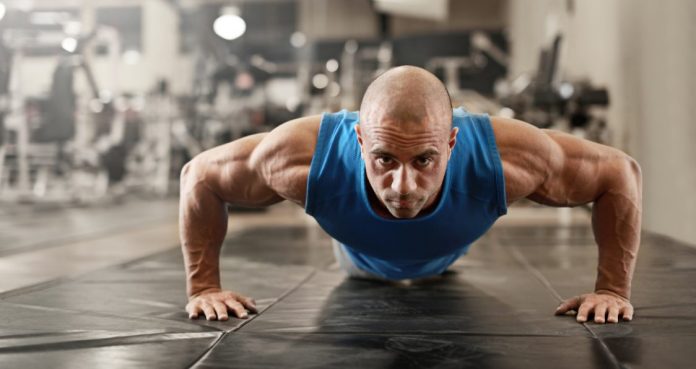
10 Pushup Variations You Need To Try
These are the 10 Pushup Variations You Need To Try
Pushups are one of the first physical exercises most people learn to perform while growing up. Since pushups are a symbol of strength, they are one of the most common physical competitions people engage in around the world.
Although there is a lot more to pushups than many people realize. The traditional pushups target the chest but there are many other variations of this exercise which work other muscle groups.
1. Traditional / Basic Pushups
Everyone needs to start somewhere and the traditional pushups are for the people who are just starting to workout. In this exercise, you lay down facing the floor with your hands placed on the floor at each side of your chest. If this variation is hard for you, you should start with kneeling push-ups or wall push-ups until you build strength.
2. Diamond Pushups
While the traditional pushups primarily work your chest, the diamond pushups are efficient at engaging your triceps more than your chest. In diamond pushups, you form a triangle by joining both your thumbs and index fingers under your chest.
3. Superman Pushups
[embedded content]
Superman pushups are one of the harder forms of pushups. This exercise engages your core and requires shoulder strength. Lie down facing the floor with your arms and legs stretched out. Perform the pushups using your shoulders.
4. Clap Pushups
There are only a few other pushups variations which can increase your strength and explosiveness like the clap pushups. Perform a traditional push-up, explode your way up so your hands are off the ground. Clap your hands while you’re in the air.
5. Spiderman Pushups
You’re wrong if you thought pushups can only engage and develop your chest. Spiderman pushups work your core and help you in developing the obliques. Get into the traditional push-up position, raise your right leg to your right elbow and hold it at this position while you perform a set. Repeat for the left side with your right foot on the floor.
6. One-Armed Pushups
Single-armed pushups have been the symbol of badassery for a long time. One-armed pushups are a unilateral exercise which works one side of your body at a time. Unilateral exercises are great at fixing muscle imbalances and building strength.
7. Incline Pushups
Incline pushups involve the same hand placements as the traditional pushups. This exercise works your lower pecs and triceps. In incline pushups, you have your feets placed on the floor while your hands are placed on an elevated platform like a bench.
8. Decline Pushups
Decline pushups are the opposite of the incline pushups. In this exercise, your feet are placed on an elevated platform while your hands are on the floor. Decline pushups work your upper pecs and shoulders.
9. Weighted Pushups
Weighted pushups can be a variation of all the exercises mentioned in this article. If you find any of the exercises on this list to be easy, feel free to add resistance by using weights.
10. One-Leg Pushups
Single-legged pushups are one of the few pushups variation which involved your lower body. Raise your right leg with your left foot on the floor while you perform a set of pushups. Repeat with the left leg raised and your right foot on the floor. Doing this will recruit your core and abs.
Which is your favourite push-up variation? Let us know in the comments below. Also, be sure to follow Generation Iron on Facebook and Twitter.
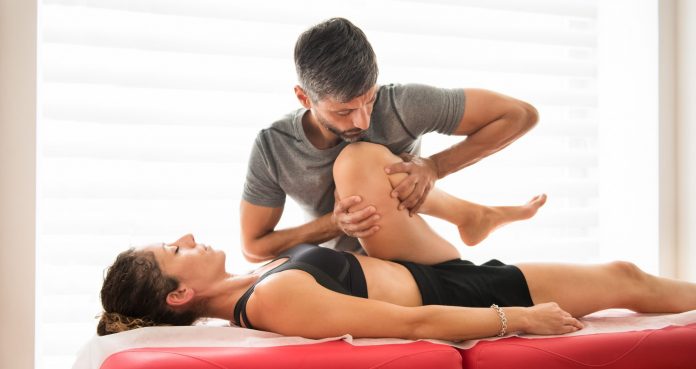
Top Exercises To Increase Hip Mobility To Improve Performance
Don’t let tight and stiff hips keep you from performing at your maximum level.
Our hips are incredibly important for our overall movement and way of stabilizing and supporting our bodies. Strengthening and stretching the hip muscles can only build more stability and decrease our risk of injury. There are many reasons why we have tight hips, mainly due to sitting at a desk all day or overuse for people who compete in sport or exercise regularly. Even those without hip concerns can benefit from good hip mobility exercises to keep the hips in peak condition.
Mobility is the usable range of motion for that part of the body and is the foundation of support and athleticism. Without full control of our joints and how they move, we will not fully optimize what it takes to succeed at a high level. To push past boundaries, set personal records, and see big gains, we need to have all parts of our bodies mobile and ready to take on any challenge. As a main point of connection between upper and lower body movements, tight hips will prove to be an incredible disservice to any kind of performance.
When it comes to hip strengthening, in efforts to improve mobility, you should focus on the gluteus maximus and gluteus medius. The gluteus maximus is the main extensor muscle of the hip and aids in stability (1), while the gluteus medius connects the thigh bone and pelvis to assist in movement. Be careful not to over work the IT band which is located in front of the hip joint and focus on strengthening the back and sides of the hips. Starting slow is key, especially if you already have tight hips, and eventually you feel great about the progress made with this.
Why Hip Mobility Matters?
Hip mobility matters because it aids in the proper function of the hip joint. Around 15 muscles and 3 major ligaments are involved with the hip joint and that is a lot of working parts to mesh together as one unit. All work together to move and stabilize the hips and while the hip joint is meant to be very stable and slightly less mobile than other joints, it is still important for your hips to work for your benefit without being tight and stiff while also ensuring stability and injury prevention (2).
For performance, hip mobility is huge for extension which helps us run and provides us with great power. Hip flexion allows us to execute big lifts properly and effectively and hip abduction and adduction allow for quick movements to outperform competitors. All of these are stunted with poor mobility and that can be enhanced with hip strengthening (3).
Stretching is great for temporary relief of tight hips but to really improve overall mobility, it requires specific strengthening exercises combined with stretching. Foam rolling and massage therapy can be great for accessing some level of better range of motion (4) and combine that with certain exercises, you will be well on your way to have those mobile yet stable hips.
Bodyweight Warm-Up Exercises
Frankenstein Walks
These will really target your hips, quads, and hamstrings while working on that range of motion. Keeping good posture is key with these to avoid adding extra pain.
How to: With your arms extended in front of you, kick one leg up and extend it out as you swing the leg up to your hands. Lower to the floor and repeat with the other leg. Feel free to change pace and direction as you get comfortable with this exercise.
Hip Circles
Hip circles will work your balance and help improve flexibility and stability as they force you to stay still while providing extra movement. It is great for both legs and improving balance while having to rely on each leg individually to support your full body.
How to: With one leg lifted, move it in circles, both frontwards and backwards, for your desired number of reps. Change legs and repeat the process with that side.
Walking Lunge With Twist
This works to really isolate your quads and hamstrings with the lunge, while working your balance and stability with the twist as you also engage your core.
How to: Execute a lunge motion and once in the lowered position, twist your upper body to the side of the knee that is bent. Slowly bring your body back around and repeat the same process with the other leg.
Weighted Workout Exercises
Wide Stance Squat Below Parallel
By going below parallel, you really work to better target the abductor group to enhance mobility. It is helpful with this to angle your toes slightly outward in the squat position.
How to: With your feet slightly wider than shoulder width apart and your toes angled slightly outward, get down into a squat position by pressing your hips back and lower the glutes to the ground. Drop past 90-degrees to get below parallel and pause for a moment. Slowly return to the starting position.
Single-Leg Romanian Deadlifts
A challenging exercise, these are great for core strength, as well as balance and hip mobility. It will also provide for a great lower body workout.
How to: Standing on one foot, hold a dumbbell in the opposite hand. With a flat back and engaged core, hinge at the waist and lift your other leg off the ground as you lower the weight to the ground. Return to the starting position and continue for your desired number of reps.
Lateral Step-Up
Another great lower body exercise, it will target all areas of your legs, hit your core, and require good balance to aid in stabilization. You can increase intensity by also increasing the weight.
How to: Hold a weight in front of your chest and stand to one side of the box. Step up onto the box keeping a neutral spine and engaged core and gently step down. Repeat for both sides and for your desired number of reps.
Wrap Up
Hip mobility matters not only for athletic performance but for your overall quality life. Don’t let unwanted pain stop you from doing things you love. While the hips joints can be stable and are meant to keep you balanced and supported, having a great range of motion is what matters and can really help improve all aspects of your life. Try these warm-up and weighted exercises to really strengthen your hips and get that mobility to where it needs to be to perform and feel great about doing so.
Let us know what you think in the comments below. Also, be sure to follow Generation Iron on Facebook, Twitter, and Instagram.
*Images courtesy of Envato
References
Williams, Michael J.; Gibson, Neil V.; Sorbie, Graeme G.; Ugbolue, Ukadike C.; Brouner, James; Easton, Chris (2018). “Activation of the Gluteus Maximus During Performance of the Back Squat, Split Squat, and Barbell Hip Thrust and the Relationship With Maximal Sprinting”. (source)
Holcomb, William R.; Miller, Michael G.; Rubley, Mack D. (2012). “Importance of Comprehensive Hip Strengthening”. (source)
Kendall, Karen D.; Emery, Carolyn A.; Wiley, J. P.; Ferber, Reed (2015). “The effect of the addition of hip strengthening exercises to a lumbopelvic exercise programme for the treatment of non-specific low back pain: A randomized controlled trial”. (source)
Cole, Gibwa (2018). “The Evidence Behind Foam Rolling: A Review”. (source)
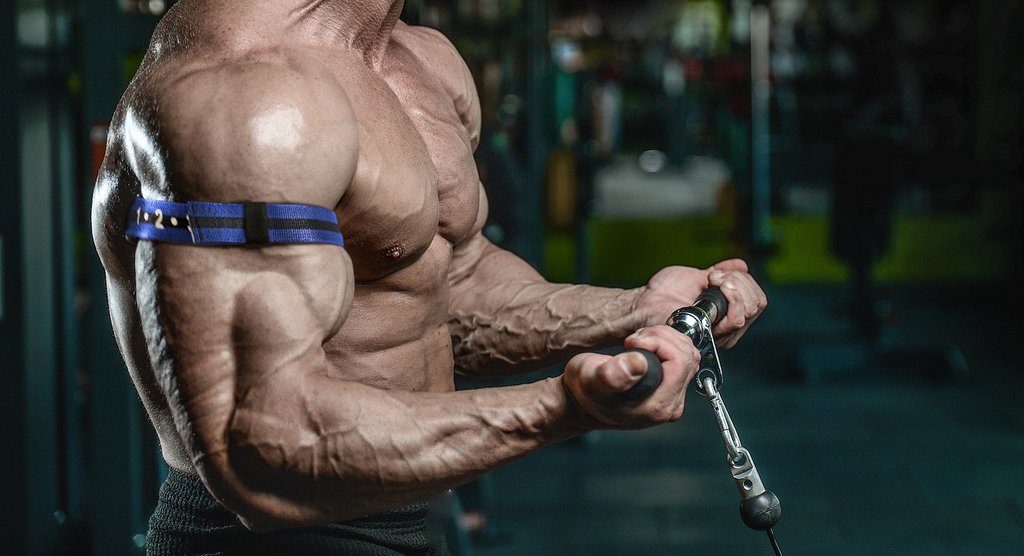
Changing It Up: Occlusion Training
Here is a way to change it up using occlusion training!
The gym can be a breeding ground for groundbreaking idiocy but in the same instance it can help provide inspiration for some new ways to train also.
The technique I am going to talk about, isn’t one that is used too often as it has the potential to be dangerous if used incorrectly but also if used right it can add to your gains.
What method am I referring to? Of course, it is Occlusion training.
What is Occlusion Training?
The term “occlusion” has a literal definition of “a closure or blockage”.
So Occlusion training or Blood Flow Restriction training (BFR), is the act of causing a blockage of blood to the muscle groups being exercised with the use of cuffs, bands, or wraps.
An example would be using bands around the top of the biceps to ensure maximum pump during bicep curls. Or cuffing the top of your legs to get those quads pumped. If you have lagging calf muscles then why not cuff the tops of your calves and go HAM with calf raises.
So what makes this method work?
Because blood flow is being restricted to the muscle which has been cuffed, the blood is essentially being pooled in that one area (the muscle which has been cuffed), and this then limits oxygen delivery to that area, which in turn takes longer to reach muscle fatigue in the area that has indeed been cuffed.
One of the most amazing aspects about Occlusion training is that it actually allows the body to respond to low level intensity exercise (best used for fat loss) in the same way it does to moderate intensity exercise (best use for muscle hypertrophy). This means you are able to get the same muscle building benefits while lifting lighter weight as you would by lifting heavier weight
So even though you’re lifting a lighter load it will feel heavier and this metabolic stress tricks your brain into believing it is doing more work than you actually are and this then triggers the release of growth hormone.
How to do it:
For muscle growth, you need to use heavy weights ( > 65% of your 1RM). However, occlusion training with lighter weights (20 -50% of 1RM) has shown to achieve muscle & strength gains comparable to conventional training with heavier weights (around 80% 1RM).
Should you do it?
One study concluded that the occlusion or ‘BFR can lead to improvements in strength, muscle size and markers of sports performance in healthy athletes’.
They also added that additional studies needed to be ‘conducted to find the optimal occlusive pressure to maximize training improvements.’
So how does it increase muscle growth?
Well muscles are made of two types of fibers: Type 2 & Type 1 fibers.
Type 2 fibers are the ones which grow easily and make you look big. But Type 2 fibers are only recruited when you go to failure or when you use heavy weights ( >80% 1RM).
When lighter loads are combined with occlusion, Type 2 fibers are recruited way early in the set just like when you are doing a heavier weight. So they get naturally bigger.
Lighter loads with occlusion have also shown to increase growth hormone (GH) levels more than heavy training would normally do.
But how does it release Growth Hormone?
A study from 2000 showcased that low load BFR training to failure increased growth hormone ‘290 times as high as that of the resting level 15 mins after the exercise’ in question.
And as mentioned earlier, even though you’re lifting a lighter load it will feel heavier and this metabolic stress tricks your brain into believing it is doing more work than you actually are and this then triggers the release of growth hormone.
Body parts for occlusion:
Muscle
Where to cuff
Biceps
Top of arm between delt and bicep
Triceps
Top of arm between delt and
tricep
Quads
Top of the Quad
Hams
Top of the Ham
Calves
Top of calves
Forearms
Top of forearms, just below elbow
Tips:
Do not wrap at knees or elbows, go top of arms or legs depending on muscle you are training
Wrap in layers, and spread out the cuff and bandage being used so excess pressure isn’t being placed on the same area
Do not wrap too tight where movement becomes restricted, you want to aim for 40-60% tightness
To conclude
Now if you’re looking to build up strength especially after an injury, short term use of occlusion training may be a good way to get back in the game. Likewise, if you’re getting fatigued by heavy lifting or just the thought of having to pick up a really heavy bar to make a difference is getting you down, doing some short term occlusion sets because of their effective low reps and light weight, may be just the thing to keep you training and provide the mental break necessary to get back at it.
So there you have it, occlusion training can now be added to your armoury for the next session.
So until next time, keep pumping!
For more news and updates, follow Generation Iron on Facebook, Twitter, and Instagram.
References
https://www.ncbi.nlm.nih.gov/pmc/articles/PMC6530612/
https://pubmed.ncbi.nlm.nih.gov/33196300/
https://journals.physiology.org/doi/full/10.1152/jappl.2000.88.1.61
https://pubmed.ncbi.nlm.nih.gov/19885776/
https://www.ncbi.nlm.nih.gov/pmc/articles/PMC5609669/
https://www.ncbi.nlm.nih.gov/pmc/articles/PMC6349784/
https://pubmed.ncbi.nlm.nih.gov/30011262/
https://www.ncbi.nlm.nih.gov/pmc/articles/PMC6683630/
https://pubmed.ncbi.nlm.nih.gov/23446173/
https://www.ncbi.nlm.nih.gov/pmc/articles/PMC3463864/
https://pubmed.ncbi.nlm.nih.gov/26323350/
https://pubmed.ncbi.nlm.nih.gov/10846023/
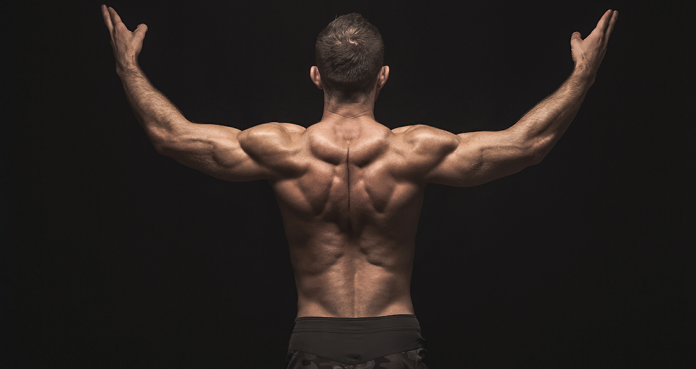
Achieve Mind Boggling Shoulder Gains With These 4 Exercises
A Complete Shoulder Workout
Broad shoulders are a sign of strength and power. Imagine what would Superman look like with tiny shoulders. A study from the University of Albany found that a woman’s sexual satisfaction is strongly linked to her partner’s attractiveness and shoulder breadth.
Going by this research, who wouldn’t want to have a nice set of shoulders. This is easier said than done. Shoulders are one of the hardest muscle groups to develop. Building round shoulder caps requires a combination of compound and isolation exercises.
Shoulders consist of three heads; medial (middle), anterior (front) and posterior (rear). Most people have lagging shoulders because they fail to train all the three heads equally. The rear deltoids are usually the most stubborn among the three.
We have designed this workout keeping in mind an overall development of your shoulders. If you’re stuck on a plateau, you should also experiment with advanced training techniques like supersets, drop sets, rest-pause sets, etc.
1. Military Presses – 3 Exercises 12 Reps
Military presses are a compound exercise which works the medial and the anterior shoulder heads. You should start your shoulder workout with the military presses as they are one of the most taxing exercises.
Since this is an overhead movement, you need to be extra careful while performing it. Ask someone for a spot if you’re going for a PR. You should also be using lifting equipment like a weightlifting belt and wrist wraps for support.
2. Dumbbell Front Raises – 3 Exercises 12 Reps
Dumbbell front raises work the anterior (front) deltoids. Most people make the mistake of going too high while performing this exercise. Raise the dumbbells to your eye level without using any momentum.
Negatives are an important part of the dumbbell front raises. Don’t drop the weights like a bomb, keep the negatives slow and controlled. If you want a better pump, perform unilateral sets. Unilateral sets are when you perform all the reps on one side before moving on to the other.
3. Pec Deck Rear Flyes – 3 Exercises 15 Reps
Most people lack in the rear delt department. They make it even worse by not training their rear deltoids often enough. Since your rear delts are at your back, it is hard to establish a mind-muscle connection with them as you can’t see them in the mirror.
Pec deck rear flyes are an isolation exercise. Using cables help in maintaining constant tension on your rear delts throughout the movement. Pause for a second at the top of the movement and squeeze your rear delts.
4. Cuban Presses – 3 Exercises 12 Reps
[embedded content]
Cuban Presses are an incredibly effective exercise which helps in building overall muscle mass. Hold dumbbells in both hands and place them in front of your quads. Perform an upright row and at the top of the upright row, switch to the shoulder press position.
Complete a shoulder press and return to the starting position by performing a negative on the upright row. Use moderate weights while performing this exercise as it is more brutal than it might look like.
5. BONUS: Barbell Shrugs – 3 Sets 15 Reps
Don’t leave out your traps while training your shoulders. The trapezius is one of the major muscles of the back and is responsible for moving, rotating, and stabilizing the scapula (shoulder blade) and extending the head at the neck.
While performing the barbell shrubs, most people put more weights on the bar than they can handle. Bring your shoulder to your ears and hold them there for a second. You can also perform this exercise using dumbbells.
What day of the week do you train your shoulders? Let us know in the comments below. Also, be sure to follow Generation Iron on Facebook and Twitter.
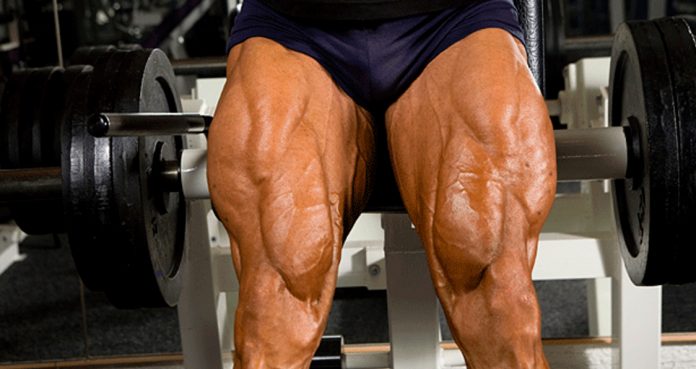
5 Exercises for Shredded Legs
Get Shredded Legs with these 5 Exercises
Shredded legs are what separate the men from the boys. You need to have strong and muscular wheels as your legs are the foundation of your body. While legs are one of the most important muscles to train, many people around the world skip training them.
You need a combination of compound and isolation exercises in your workouts to take your wheels to the next level. Time under tension, volume and intensity play a major role in developing your legs.
Hack Squats – 3 Sets 15 Reps
Hack squats are one of the most underutilized exercises when it comes to leg training. The hack squat machine helps you to tweak your movement to target your quads from different angles.
Arnold in his book ‘Encyclopedia of Bodybuilding’ said that you are supposed to maintain a full range of motion while performing the hack squats. Place your feet under your body and push your knees forward on the negative motion. Pause at the bottom of the movement and explode back to the starting position.
Leg Extensions – 3 Sets 15, 12, 10 Reps
Most people perform the leg extensions incorrectly. They load the extension machine with more weights than they can handle and use momentum and a jerking movement to lift the weights. The most effective way of doing the leg extensions is to pause for a couple of seconds at the top of the movement.
The positive movement should take one second, hold the weights on the contraction for two seconds, take four seconds on the negative movement and take no rest by racking the weights at the starting point.
Good Mornings – 4 Sets 8 Reps
Since your Hamstrings are at the back of your legs, it is harder to train and develop them as compared to your quads. It also becomes harder to establish a mind-muscle connection with your hams since you can’t see them in the mirror.
Good mornings are a hard exercise to execute and you need to keep the movement slow and controlled to get the best results. If you perform the good morning in a squat rack, set-up safety bars at your belly button level and bend until the barbell touches the safety bars.
Nordic Curls – 3 Sets 15 Reps
[embedded content]
Chances are you might not have seen anybody perform the Nordic curls exercise in your gym. Nordic curls can set your hamstrings on fire and you will need a spotter if you have weak hams.
The lat pulldown machine is the best place to perform this exercise. Put your ankles between the knee pads and the seat and place your knees on the seats. Bend your back so it is parallel to the floor. This will be your starting position. Lower yourself using your hamstrings without moving your back, so your face is 8-10 inches away from the floor.
Cannonball Squats – 3 Sets 15, 12, 10 Reps
Perform the squats at the end of your workouts when your legs are completely exhausted. This way you won’t have to lift super heavy weights and your legs will be warmed up so you will have a better range of motion.
While performing the cannonball squats, you need to stand with the balls of your feet placed together and your toes facing outwards. The cannonball squats is a compound exercise which helps in developing the inner sweep of your quads.
Which is your favorite leg exercise? Let us know in the comments below. Also, be sure to follow Generation Iron on Facebook and Twitter.

The Arnold-Approved Training Program You Need to Try This Week
Try this Arnold-approved workout
If you’ve been around the fitness scene for some time, chances are, you would have come around Arnold’s Encyclopedia of Bodybuilding. In his book, The Governator, among many things, lists his experiences and results using various training programs.
One of the programs Arnold recommends in his book is the antagonistic superset training. Arnie considered them to be better than the usual supersets where you switch from one exercise to the other without any rest in between sets.
Antagonistic Training
In the antagonistic training, you train opposing body parts in the same workout. For example, Schwarzenegger liked to train his chest and back, biceps and triceps, quads and hams in the same workout.
Although there were no studies or research to prove it, Arnold claimed the antagonistic supersets help him gain muscle mass and improved his strength. Researchers have since backed this technique with data and have given Arnold’s claims a clean chit.
Things to Know About Antagonistic Training
You can use the antagonistic training principle of training opposing muscle groups as a superset or take a 2-3 minute rest before alternating the exercise.
Antagonistic training can help you in building pressing strength by alternating the exercise with pulling movements.
It helps in maintaining muscle balance as you’ll be doing the same amount of work on the opposing muscles.
Alternating sets with a 2-3 minute rest in between sets can increase muscular strength as compared to super-setting which annihilate the muscles.
While following the antagonistic training plan, you need to train your opposing muscles in the same plane to get the best results. For eg. – follow bench press with the bent over barbell row.
Develop Symmetry with Antagonistic Training
The antagonistic training is better at developing symmetry and eliminating muscle imbalances than most other training methods. If you’re already suffering from a muscle imbalance, train the lagging muscle before the stronger muscle in the alternate sets.
Antagonistic training ensures you’ll be doing enough work on both sides of the bone to build and maintain muscle symmetry. Alternating between pulling and pushing movements will keep you from overdeveloping some muscle groups which can cause a poor posture.
You could also perform supersets as opposed to the alternate sets in the antagonistic training program but be ready for a hard and grueling workout. Make sure you’re following the same intensity in the pulling and the pushing movements.
Use the Same Angles
A major aspect of antagonistic training is to use the same angles while performing the antagonistic exercises. If you’re performing dumbbell chest presses on an incline bench, turn around and perform dumbbell rows as the alternate set for your back.
In the same fashion, follow up the standing military presses with chin-ups. Using the same angles will ensure the muscles in direct opposition to the prime movers are trained more effectively.
The Arnold-Approved Antagonistic Training Program
Day 1 – Chest / Back
Set 1
Barbell Bench Press – 3 Sets 15-12-10
Bent-Over Barbell Rows – 3 Sets 15-12-10
Set 2
Incline Dumbbell Flyes – 3 Sets 15-12-10
Chest Supported Dumbbell Rows – 3 Sets 15-12-10
Set 3
Chest Cable Flyes – 5 Sets 15
Rear Delt Cable Flyes – 5 Sets 15
Day 2 – Biceps / Triceps
Set 1
Cable Bicep Curls – 5 Sets 15-12-10-8
Cable Tricep Presses – 5 Sets 15-12-10-8
Set 2
Incline Bench Spider Curls – 3 Sets 15-12-10
Incline Bench Skullcrushers – 3 Sets 15-12-10
Set 3
Bent Over Concentration Curls – 3 Sets 15-12-10
Leaning Dumbbell Tricep Kickbacks – 3 Sets 15-12-10
Day 3 – Shoulders / Back
Set 1
Barbell Military Presses – 3 Sets 15-12-10
Weighted Chin-ups – 3 Sets 15-12-10
Set 2
Plate Front Raises – 3 Sets 15-12-10
Straight-Arm Lat Pulldowns – 3 Sets 15-12-10
Set 3
Arnold Presses – 3 Sets 15-12-10
Upright Rows – 3 Sets 15-12-10
Day 4 – Quads / Hams
Set 1
Leg Extensions – 5 Sets 15-12-10-8
Seated Leg Curls – 5 Sets 15-12-10-8
Set 2
Leg Press (Feet Low on Platform) – 3 Sets 15-12-10
Leg Press (Feet High on Platform) – 3 Sets 15-12-10
Set 3
Squats – 3 Sets 15-12-10
Set 4
Stiff-Legged Deadlifts – 3 Sets 15-12-10
Have you ever tried the antagonistic training principle? Let us know in the comments below. Also, be sure to follow Generation Iron on Facebook and Twitter.
*Header image courtesy of Jamie Wyeth under the CC BY-NC-SA 2.0 license.
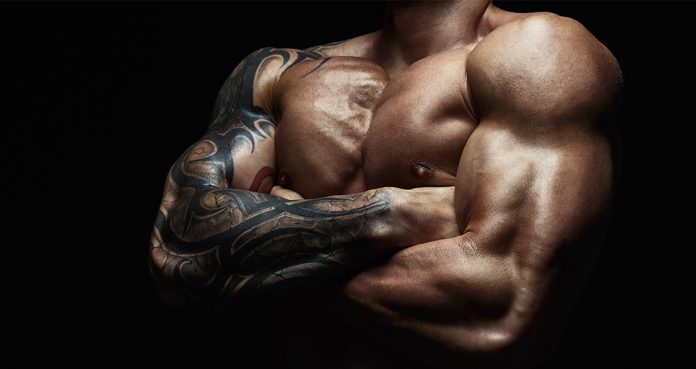
5 Ways To Bring Up A Lagging Body Part
Follow These 5 Steps To Bring Up Your Lagging Muscle Group
You’re having the perfect workout, you’re all pumped up and your biceps have turned into mountains, but then you look at your toothpick legs and its all over. Most people have a lagging body part which can create a hole in their self-confidence.
There could be a couple of reasons behind the lagging body part. It could either be your genetics or you’re not training the muscle group correctly. A lagging body part needs to be treated differently as compared to the other muscles.
1. Start Your Workouts With The Weaker Muscle Group
Humans have unique genetics and they determine the muscle composition of an individual. Although the most common weak muscle groups are forearms, calves, biceps, and triceps, it may vary for every person.
If you train your lagging muscle group with a stronger muscle group, you should train the weaker muscle at the beginning of your workout. If you have weak calves and stronger upper legs, you should train your calves before you train your quads and hams.
2. Use Advanced Training Techniques
A big reason why you might not be seeing results in the gym could be because your body has got used to your training. You should constantly change your training programs and use advanced training techniques to break the plateau.
Advanced training techniques like supersets, drop sets, negatives, intraset stretching, etc. are a great way to pump blood into your weaker muscles and shock them. Try switching these advanced training techniques with every workout for optimal results.
3. Train The Lagging Muscle Group Twice A Week
If you’re not seeing results you should start training your weak muscles twice a week. You don’t need to worry about overtraining your muscles if you give your body enough time to recover between the workouts.
Schedule your workouts so you have at least 48 hours before you hit the same muscle again. Keep your workouts short and explosive. You should be spending around 45-60 minutes inside the gym, not more than this.
4. Switch Volume and Intensity
Most people make the mistake of sticking to the same volume and intensity for all their workouts. While 3 sets of 12 reps might work for other muscle groups, they won’t budge the needle for your weaker muscles.
Volume refers to how many reps or sets are performed, and intensity indicates how much weight is lifted. Switch your volume and intensity at regular intervals to keep your muscles guessing. The combinations of high reps, low weight and low weight, high reps work the best for lagging muscles.
5. Establish a Mind-Muscle Connection
Bodybuilding isn’t about going through the motions. You need to focus on your muscles and contract them with every single rep. Arnold Schwarzenegger brought the mind-muscle connection to the limelight.
The Governator believes you need to become the muscle to see the best results. If you’re training your biceps, focus all your attention on the bicep and squeeze the living hell out of it at the top of the movement. Arnie is famous for thinking of his biceps as mountains.
Which is your weakest muscle group? Let us know in the comments below. Also, be sure to follow Generation Iron on Facebook and Twitter.

How Margarita Ventura Prepares For The 2021 NPC East Coast Cup
Professional bodybuilder and Generation Iron managed athlete, Margarita Ventura, shares her training routine, nutrition plan, and mental state leading up to NPC East Coast Cup.
Margarita Ventura is set to compete at the NPC East Coast Cup Championships in what is shaping up to be an exciting event. Juggling her advertising career and bodybuilding has not been easy, but her incredible work ethic and mindset, along with a great training plan and nutrition routine, has allowed her to compete at a very high level. In the days leading up to this championship event, Margarita walks us through her training, nutrition, and mental state as she gears up for a bodybuilding battle in East Haven, Connecticut come Saturday.
About Margarita Ventura
Like many of us, Margarita Ventura found herself caught in the struggle of balancing her work and personal life. Seeing the negative toll this was taking on her, she sought to make a change and now takes these lessons that helped her to inspire and help others to do the same. She made her amateur debut in 2015, placing first in the Masters Bikini Division and in the top two of the Open Bikini Division. Now with her pro card in hand, she sought to prove herself at the highest level of the sport. At the WBFF Worlds Bahamas competition, she finished in the top five, all while working a full-time job, proving anything is possible.
NPC East Coast Cup Preparation
When it comes to Margarita’s competition prep, she knows how easy it can be to get overwhelmed. For Margarita, it is easy to get overwhelmed with competition prep when you are thinking too far out. For her, it is best to approach each day one at a time and follow and trust the process. A great pro tip from a true professional.
Training Plan
When it comes to Margarita’s training plan, it usually revolves around cardio and weightlifting, staggered throughout the days and week to maximize her workouts. Leading up to this event, cardio is done 7 days a week, with a 35-minute morning cardio session and 35 minutes performed in the evening. She will also perform three glute exercises 7 days a week for around 15-30 minutes. For weightlifting, a 4-day split will see 60-90 minute workouts.
To sum Margarita’s workout routine up, she trains twice a day, morning and evening with cardio performed everyday and lifting dependent on her schedule. With juggling her business and finding time for self-care, she will either workout at her apartment gym or on Chelsea Piers, all depending on how she feels and what kind of time she can commit.
Nutrition & Supplementation
Her diet has to be strict and meal prepping has been a huge help for this. Typically, food will be delivered on Sunday and Thursday so she only has to buy other food in smaller windows, if need be. As someone who isn’t the biggest fan of microwaved food, working from home has allowed her to heat food on the stove in efforts to control everything she eats to really stick to her diet.
Supplements are vital for a routine and can fill in any gaps and eliminate deficiencies. Margarita takes her supplements religiously as directed to make sure nothing is sacrificed at any point.
Mental State
Bodybuilding always saved Margarita from the adversity, stress, and workaholic mind frame and has been a guide for how to decompress when dealing with an overachieving personality. Choosing to leave her WBFF Pro status to start fresh in NPC was a difficult decision, but one that has allowed her to learn from the best.
Having such an accomplished career thus far, she realized there is no good time to compete and that when life throws you obstacles or challenges, you need to roll with the punches and take them head on. For Margarita, when she would be preoccupied with other factors, it would add unnecessary stress and not allow her to feel fully comfortable or open to succeed.
Having left a job full of toxicity and an unhealthy work environment, she now works for a much healthier company which has alleviated much of her stress and has improved her bodybuilding ten-fold. What you do for work makes up so much of your day and impacts your health and fitness greatly, making this important to prioritize. Now in a spot she wants to be in, she has tailored her professional career in advertising to align nicely with her fitness and bodybuilding lifestyle.
How Margarita Stays Motivated
With her busy schedule and constant stress on both her mind and body, Margarita must find ways to stay motivated throughout her journey. For her, she lives almost a modern-day Mad Men-ad agency lifestyle while juggling bodybuilding all at once. She hopes to be an example of how you can prioritize and protect your health, fitness, and self-care without letting your career, business, and social events take full control. She hopes to break stereotypes, systemic racism, ageism, and sexism across both sides of the industry between fitness and business. And she hopes to be a role model for others, showing that you can in fact be an educated, career-oriented athlete. At the end of the day, you have one body and putting your longevity and health at risk just isn’t something you should stand for.
About NPC East Coast Cup
The NPC East Coast Cup Championships are set to take place this weekend, starting on October 16. A national qualifier event, athletes will compete in the following divisions: Bodybuilding, Classic Physique, Figure, Fitness, Bikini, Men’s Physique, Women’s Physique, and Wellness.
Where: East Haven High School, 35 Wheelbarrow Lane, East Haven, CT 06513
When: Saturday, October 16, 2021
Time: Pre-judging starts at 11:00 am and Finals start at 5:00 pm
Tickets: Pre-judging costs $30 each and Finals General Admission costs $40 each
Click here to purchase tickets!
You can check out all the information you need at the NPC Northeast website here!
Wrap Up
Margarita Ventura is set to compete at NPC East Coast Cup Championships with her eyes on that top prize. Her training, nutrition, and mental state are all pivotal in getting her to where she is and this is shaping up to be an exciting event for her. Making the jump from the WBFF to NPC wasn’t easy, but her work ethic and love of the sport has carried her a long way, and there’s slowing down now.
Let us know what you think in the comments below. Also, be sure to follow Generation Iron on Facebook, Twitter, and Instagram.
*Images courtesy of Margarita Ventura
